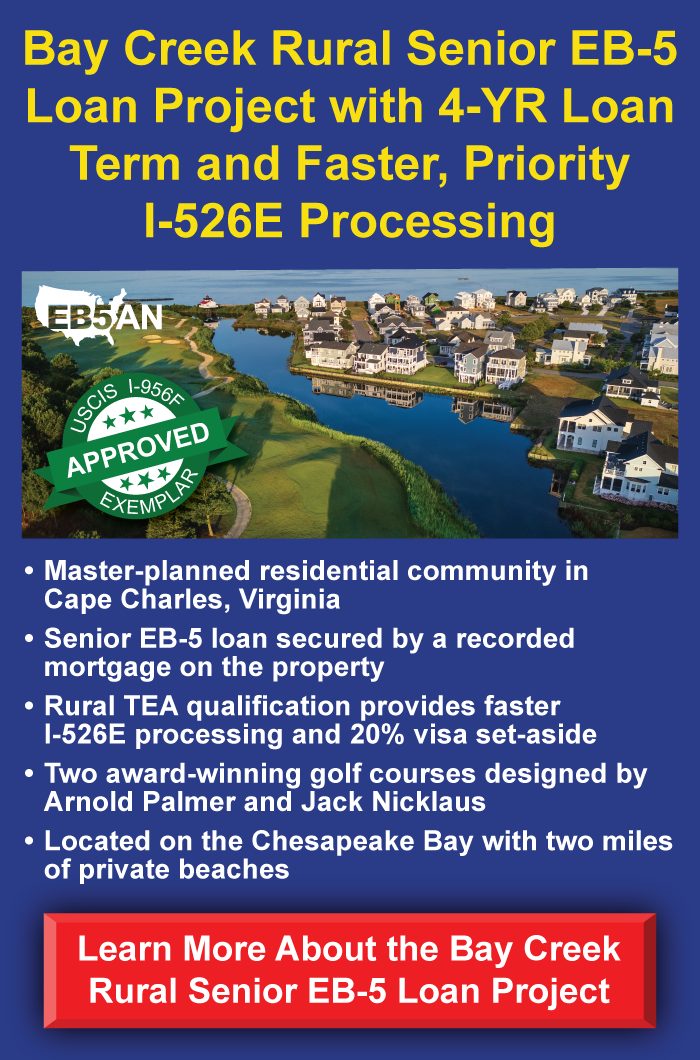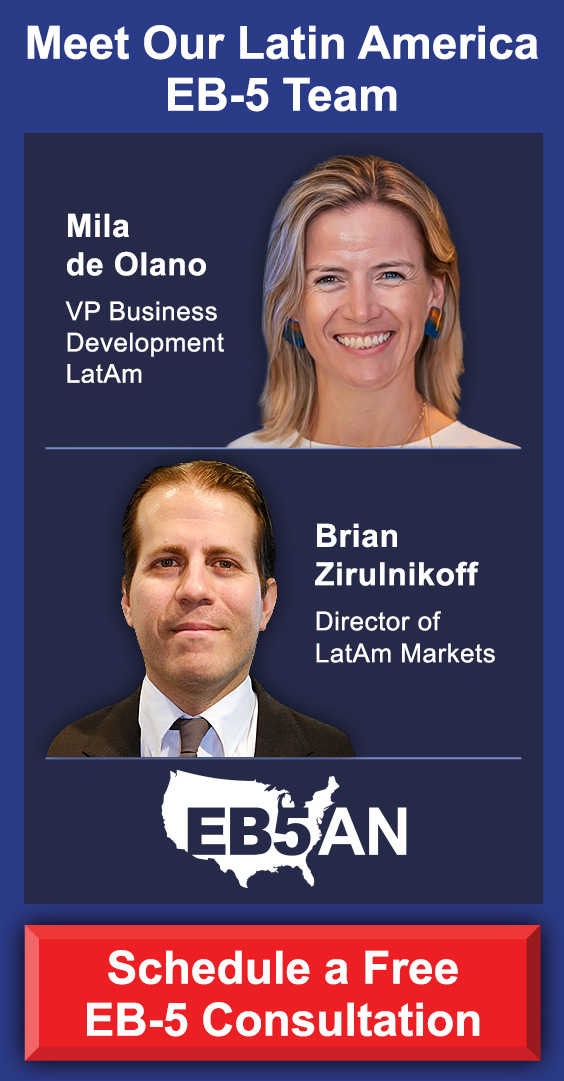The EB-5 Reform and Integrity Act of 2022 (RIA) introduced the set-aside “reserved” EB-5 visa category. Since then, the EB-5 program has become one of the fastest routes for qualified foreign nationals to obtain U.S. permanent residency.
Instead of waiting for employer sponsorship for an EB-2 or EB-3 visa, many foreign nationals—especially Indian H-1B workers—now pursue permanent residency via the EB-5 program. By going the EB-5 route, they can obtain Green Cards for themselves and their dependents faster and can change employers without fear of losing their residency status.
However, many people with pending employment-based visa applications are often initially skeptical about applying for an EB-5 visa. Specifically, they hesitate out of fear that the EB-5 application may affect their pending employment-based application.
In this article, we’ll discuss the possibility of applying for an EB-5 visa when you have a pending employment-based visa application and the associated risk factors.
Applying for EB-5 With a Pending Employment-Based Non-Immigrant Visa
Applying for EB-5 With a Pending Employment-Based Immigrant Visa
EB-5 Provides a Faster Pathway to U.S. Permanent Residency
Applying for EB-5 With a Pending Non-Immigrant Employment-Based Visa
The H-1B and L-1 visas are the most popular non-immigrant U.S. work visas.
As dual-intent visas, they allow holders to pursue permanent residency in the U.S. Hence, H-1B and L-1 workers can apply for an EB-5 visa without losing their non-immigrant visas.
However, whether you can apply for an EB-5 visa with a pending H-1B or L-1 visa application depends on several factors, including your location and current immigration status.
H-1B Specialty Worker Visa to EB-5
Most H-1B specialist workers arrive at their current status via the F-1 to OPT to H-1B route. Thus, most H-1B workers are already present in the U.S. at the time of their H-1B filing.
Crucially, if you’re an F-1 student or post-study OPT worker with a pending H-1B application, you can apply for an EB-5 visa without jeopardizing your H-1B application.
United States Citizenship and Immigration Services (USCIS) will adjudicate both applications separately. However, H-1B is typically processed faster, so you’ll likely get your H-1B status (if your application is approved) first. Once you receive I-526E and I-485 approvals, your status will automatically change to conditional permanent resident—and with the ability to receive employment authorization documentation while awaiting Green Card approval, you won’t need your H-1B visa anymore.
If you’re outside the U.S., you can also apply for an EB-5 visa with a pending H-1B application. As with U.S.-based investors, you can make the necessary EB-5 investment and file Form I-526E while awaiting H-1B approval. Once your H-1B petition is approved, you’ll undergo consular processing to enter the U.S. and start working. You can then file for adjustment of status when USCIS approves your EB-5 petition.
L-1 Intracompany Transferee Visa to EB-5
In contrast to the H-1B visa, most L-1 visa applications are made from outside the U.S. This is because the L-1 visa transfers an overseas executive or specialized worker to the U.S. branch or subsidiary of a multinational company.
So far, there’s no evidence that an EB-5 application can jeopardize a pending L-1 application—in other words, you can usually start the EB-5 application process with a pending L-1 application. However, you can only enter the U.S. on one valid visa. Hence, if your L-1 petition is approved simultaneously with your I-526E petition, you can only undergo consular processing for one visa.
The timeline for L-1 visa processing depends on whether your company uses a blanket L-1 petition or an individual one. Still, you’ll likely get a decision on your L-1 visa application before your I-526E approval. You’ll then undergo consular processing to enter the U.S. as an L-1 worker. You can then file a Form I-485 to adjust your status once you receive I-526E approval.
Importantly, though, if you’re changing your status in the U.S. from another non-immigrant category to an L-1 worker, filing an EB-5 petition may present some risks depending on your current visa status. For example, if you came into the U.S. on a B-1 tourist visa and filed an L-1 application and then, while that application is still pending, you file an EB-5 petition, it may trigger additional scrutiny from immigration authorities.
In particular, USCIS may require you to prove that you had no immigrant intent when you applied for the tourist visa.
Whenever switching from one visa to another, it’s best to consult an experienced immigration attorney who can assess your situation and counsel you on the best course of action.
Applying for EB-5 With a Pending Employment-Based Immigrant Visa
U.S. immigration rules allow you to file multiple immigrant visas as long as you qualify for them. This means you can apply for an EB-5 visa with a pending EB-1, EB-2, or EB-3 visa.
While the EB-5 visa application will have no impact on a pending employment-based visa, you may have to withdraw the other if one gets approved.
If you file an I-526E and an I-140 petition today, the I-526E will most likely be approved first due to the backlogs in the employment-based categories. Once your Form I-526E is approved, you can file for adjustment of status (if you did not concurrently do so) and withdraw the I-140 petition. You’ll apply for your Green Card through consular processing if you’re outside the U.S.
If both immigrant applications are approved at the same time, you’ll have to choose whether to pursue your Green Card through the EB-5 route or the other EB category.
If you concurrently filed Form I-485 with your I-140, you may not have to file another I-485 with your EB-5 petition. You can apply for a transfer of underlying basis, popularly called “interfiling,” instead of filing a new one. However, your immigration attorney must confirm if interfiling is available to you.
EB-5 Provides a Faster Pathway to U.S. Permanent Residency
The employment-based immigrant visa categories are plagued with heavy backlogs, especially for Chinese and Indian nationals. Indian nationals who submit an EB-2 or EB-3 petition today may have to wait up to 12 years to receive a visa. As a result, most Indian nationals now opt for the EB-5 visa as a faster pathway for obtaining a Green Card.
However, USCIS warned that the EB-5 set-aside categories may become backlogged within this fiscal year and recent data has shown growing backlogs in the urban TEA category. Consequently, prospective investors from high-demand countries may have limited time to concurrently file their I-526E and I-485 petitions. That’s why it’s best to start your EB-5 process today and benefit from faster processing before the backlogs hit.
EB5AN can help you start your EB-5 journey today. In 10+ years of practice, we’ve helped over 2,700 families from 70+ nationalities become U.S. permanent residents. We provide first-rate, low-risk regional center projects with a 100% USCIS approval rate.
For more information about the EB-5 program or help starting your EB-5 journey, book a free one-on-one call with our EB-5 expert team today.










